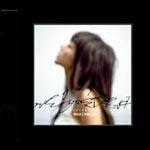Artist:Arve Henriksen
Album:Sakuteiki
Release Date:2001-10-15
Label:Rune Grammofon
Country:Norway
Genre: Electronic,Jazz
Style: Contemporary Jazz, Experimental, Ambient
Tracklisting:
| 1 | Sanmon - Main Entrance (2:37) | |
| 2 | Viewing Infinite Space (3:12) | |
| 3 | Inside Tea-House (4:47) | |
| 4 | Peaceful - Close To Cherry Trees (2:03) | |
| 5 | Procession Passing (4:46) | |
| 6 | Evening Call (2:08) | |
| 7 | Breathing (2:28) | |
| 8 | Beauty Of Bamboos (3:24) | |
| 9 | Tsukubai - Washbasin (2:27) | |
| 10 | Planting Trees Creating Beauty (4:48) | |
| 11 | "Stones Should Never Be Placed Carelessly" (2:10) | |
| 12 | White Gravel (2:26) | |
| 13 | Shrine (4:59) | |
| 14 | Paths Around The Pond (3:11) | |
| 15 | Children In My Garden (4:40) |
簡介。。。。。。
At only 33, trumpet player Arve Henriksen is already a respected figure in the world of contemporary Nordic jazz. As well as officiating in quartet Supersilent, he has been involved with the Christian Wallumrød Trio, on 1998’s No Birch, and Trygve Siem, on 2000’s Different Rivers, both released on seminal German label ECM. After studying at the Trondheim Conservatory, he has worked with John Balke’s Magnetic North Orchestra, Nils Petter Molvær, Audun Kleive or Iain Ballamy to name but a few. As well as drawing inspiration from the likes of Miles Davis, Chet Baker or Molvær, Henriksen is also very much influenced by Japanese music, especially by the shakuhatchi flute, a traditional instrument used by Buddhist monks since the thirteenth century.
Sakuteiki is Henriksen’s first solo album. Taking its name from an eleventh century Japanese treatise on garden planning, the album showcases the range of Henriksen’s artistry. Relying on very little more than a few electronic textures laid out by co-Supersilent member Helge Sten, also known as Deathprod, Henriksen draws a rich and dense sonic landscape, capturing the faintest breath of each of the instruments he plays, taking contemplative music to intense extremes. Sakuteiki was recorded in various locations, including two churches, one situated in the heart of Oslo, the other in Lommedalen, the mausoleum at the Emmanuel Vigeland Museum, also in Oslo, used for its naturally long reverb, and a loft apartment studio. All recordings were made on two tracks using two microphones, with Henriksen and Sten only using natural reverbs. Henriksen counterbalances the warmth and tonal colour of his trumpet and flute by introducing the rougher texture of an accordion (Inside Tea-House) or an organ (Procession Passing), adding an earthy edge to an otherwise airy soundscape.
Sakuteiki is everything but a conventional album. By taking his music to incredible extremes, Arve Henriksen offers a record that stands out all through. His technique, polished with his work with some of the most regarded contemporary jazz musicians, provides the most dramatic background for his compositions.
Sakuteiki is Henriksen’s first solo album. Taking its name from an eleventh century Japanese treatise on garden planning, the album showcases the range of Henriksen’s artistry. Relying on very little more than a few electronic textures laid out by co-Supersilent member Helge Sten, also known as Deathprod, Henriksen draws a rich and dense sonic landscape, capturing the faintest breath of each of the instruments he plays, taking contemplative music to intense extremes. Sakuteiki was recorded in various locations, including two churches, one situated in the heart of Oslo, the other in Lommedalen, the mausoleum at the Emmanuel Vigeland Museum, also in Oslo, used for its naturally long reverb, and a loft apartment studio. All recordings were made on two tracks using two microphones, with Henriksen and Sten only using natural reverbs. Henriksen counterbalances the warmth and tonal colour of his trumpet and flute by introducing the rougher texture of an accordion (Inside Tea-House) or an organ (Procession Passing), adding an earthy edge to an otherwise airy soundscape.
Sakuteiki is everything but a conventional album. By taking his music to incredible extremes, Arve Henriksen offers a record that stands out all through. His technique, polished with his work with some of the most regarded contemporary jazz musicians, provides the most dramatic background for his compositions.
我的碎碎唸。。。。。。評價指數:8.5/10
Arve Henriksen曾深受John Coltrane自由爵士手法影響,並研究用小號吹奏日本傳統木蕭樂器尺八(Shakuhachi)的音色,體現在2001年Rune Grammofon發表的首張個人專輯Sakuteiki中。就是這是這張專輯了。裏面具有非常明顯的日本味道,使用小號來吹奏櫻花頌,Arve Henriksen可能是世界第一人。
去豆瓣上看看。。。。。。Share


No comments:
Post a Comment